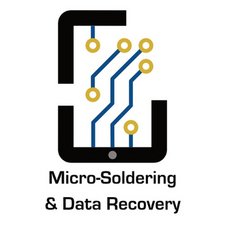Replacing the logic board will be at least double what Ian suggests as a repair price so a repair is the best route forward. Personally, I think a connector repair would cost even less than $150 but don't go for too cheap a repair as there is a lot of risk involved when working on an iPhone X board and you want to be dealing with an experienced tech who values quality work.
As for doing it yourself, don't underestimate how difficult an FCP repair is. There are three main issues:
- Component Density: iPhone logic boards have an insane level of component density. Inadvertently moving your micro-soldering iron, with a tip of 0.15mm, even just a bit will clear out a bunch of components like a windshield wiper. When using hot air, the smallest nozzle can directly blow on dozens of components, many of them 01005 packages, at the same time, blowing them off the board and never to be found again. Some of these components cannot be sourced (unless you want to buy 10 000 of them and wait 6 weeks).
- Thinness of the logic board: The logic board on the X is very thin and that means that any heat you apply will be quickly felt throughout the board. That means that while you fiddle with the FPC, the CPU, NAND and other critical chips, many of them underfilled, are heating up, the solder balls are expanding and eventually, they can bridge or blow out.
- FPC Connectors themselves: It is essentially a flimsy bit of plastic and that means they are easily damaged during the repair. Never buy just one replacement FPC…you will often go through more than one to get it just right. If the hot air doesn’t distort it beyond recognition or outright just melt it, then touching up the connections with a fine tip soldering iron will usually mangle them up.
This is a bit tongue in cheek and I’m certain that any experienced micro-soldering tech is smiling as they read this…but only because we have all been through this. Youtube videos make micro-soldering look easy but believe me, those that make videos have tons of experience and really master their field.
So by all means, practice, learn a new skill and save a great device. But please, don’t practice for the first time on an iPhone X. When you can successfully remove and re-install the same FPC connector and insure that it has electrical continuity…keep practicing. Only then would I suggest you try the iPhone X.
P.S. In all fairness, the battery connector on the X is probably one of the easier ones to replace as it has a lot of “metal” in relation to plastic. The hardest ones are digitizer connectors because they are long, have ~50 pins and warp as soon as you apply heat.
Questa risposta è stata utile?
Votato
Annulla
Punteggio
2
Annulla
Scorri questo thread per trovare il posto appropriato per questo commento. Quindi, fai clic su "Allega commento a questo post" per spostarlo.


 2
2  1
1 
 806
806 